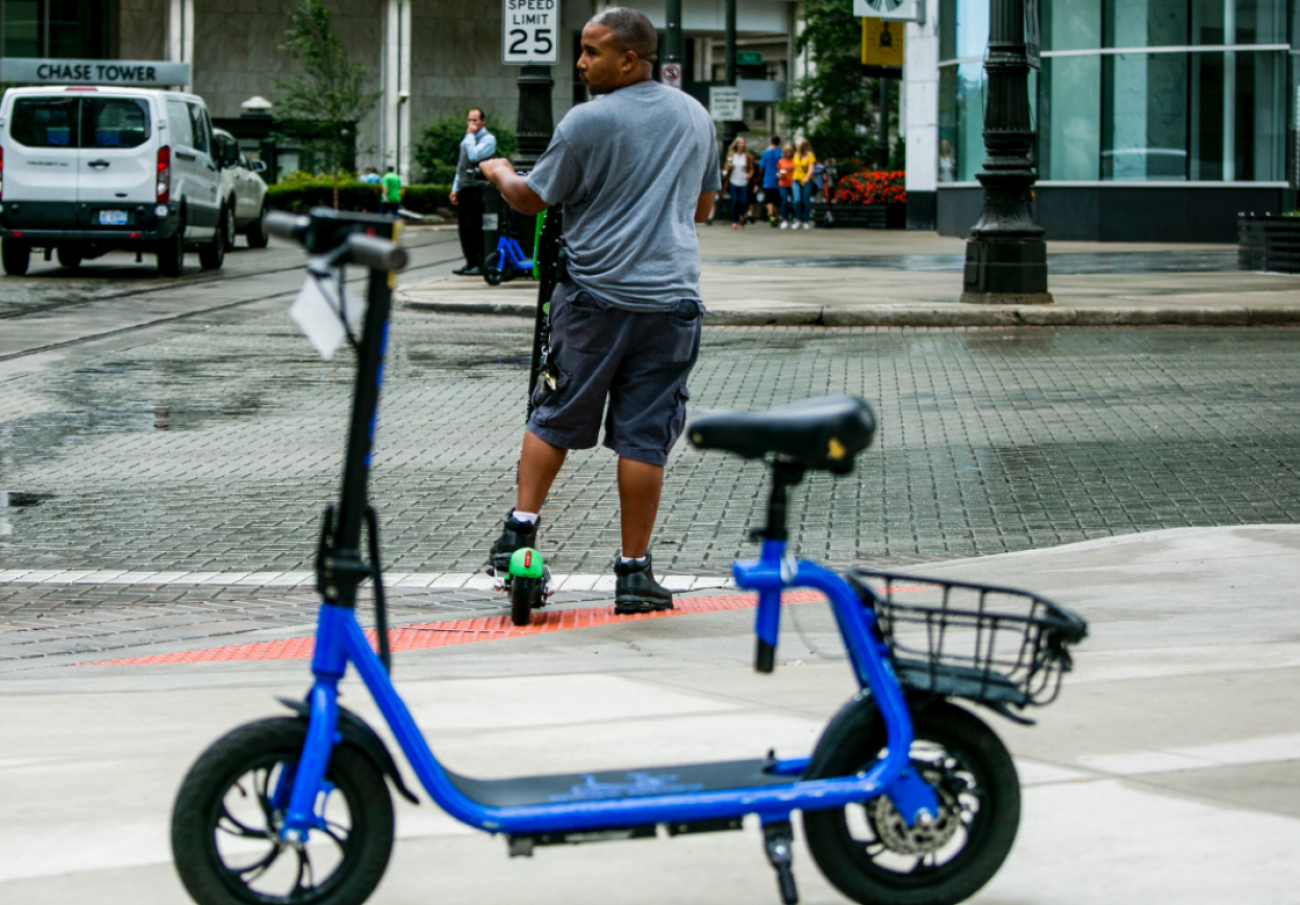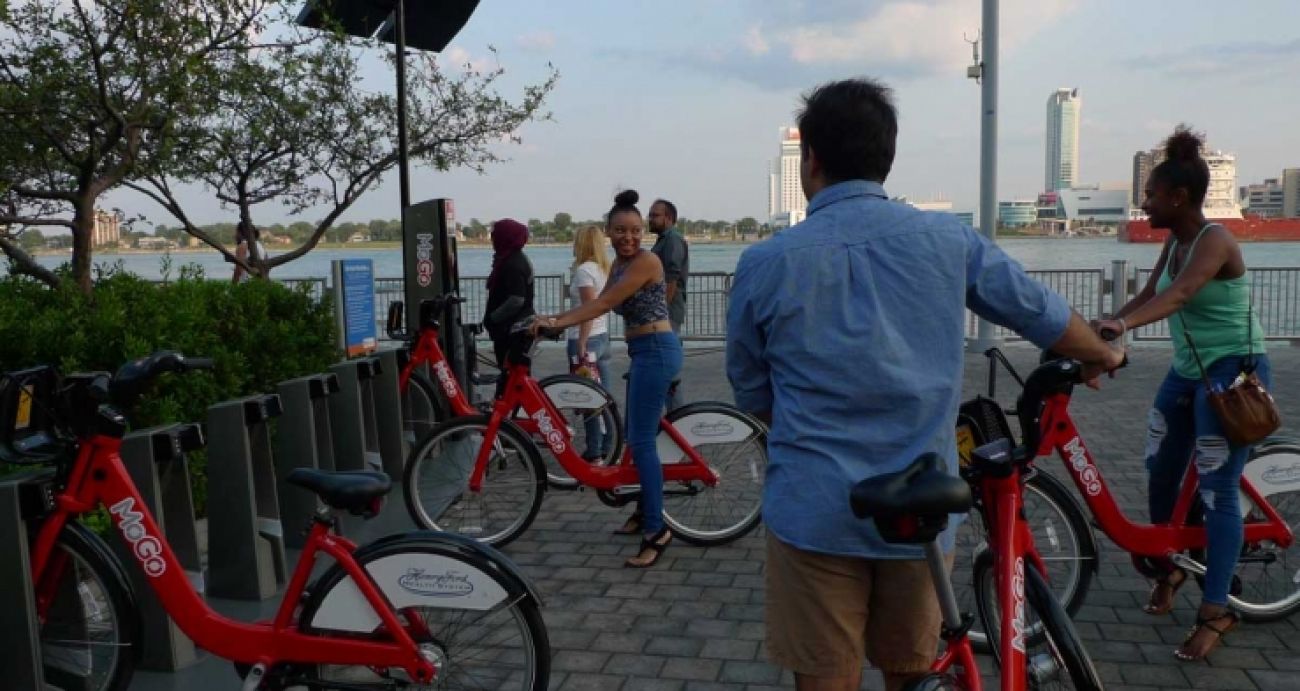In the age of Uber, will metro Detroit shell out billions for buses?

DETROIT — As transportation planners gear up for a tax request for regional transit next year, debate is percolating about how the explosion of mobility options could influence the vote.
The Regional Transit Authority of Southeast Michigan by January is expected to call for a multibillion tax request to establish express bus lines along major roads, commuter rail service from Ann Arbor to Detroit, airport express lines and rapid bus transit along Woodward Avenue.
Transportation options, though, have skyrocketed since a similar plan was defeated in 2016 by voters in Oakland, Wayne, Macomb and Washtenaw counties. In the past two years alone in Detroit, companies have introduced about 1,000 electric scooters, a bike-sharing system used for 237,000 rides last year and a driverless shuttle system in downtown.
Add in the popularity of ride-sharing services such as Uber and Lyft – and the prospect of self-driving cars hitting the market in the next decade – and some question how the technology will influence the bond request that’s expected to be for $4 billion or $5 billion over the next 20 years.
To transit skeptics, paying big money for regional transit amid fast-changing technology is akin to investing in buggy whips at the dawn of the 20th century. But advocates say the so-called new mobility will complement, not replace, traditional mass transportation.
“There is no silver bullet,” said Megan Owens, executive director of Transportation Riders United, a Detroit-based nonprofit that advocates for transit improvements.
“People always want to oversimplify the issue, and say that autonomous vehicles are going to save us all. Not necessarily. If Uber is any example, the result has been more congestion and more pollution in some of the biggest cities. All of these different pieces work best when they complement each other.”
The discussion comes as RTA leaders continue talks with government officials about when to seek a tax and whether such the request will cover all four counties. Last year, a lack of support from Macomb and Oakland counties killed the $5.4 billion, 20-year Connect Southeast Michigan plan that would have been repaid through a 1.5-mill tax.
In Oakland, the tax is viewed more favorably by government leaders following this year’s death of Executive L. Brooks Patterson and appointment of his interim successor, Dave Coulter, a transit booster.
Resistance remains in Macomb County, whose Executive Mark Hackel has long questioned whether his taxpayers get value from transit and last year’s tax renewal for the SMART bus system passed by only 39 votes.
“You can’t push that square bus peg through the round hole in the suburbs. It doesn’t work,” said Macomb County Commissioner Leon Drolet, founder of nonprofit Michigan Taxpayers Alliance.
In an opinion column this fall, Drolet wrote “Detroit would be foolish to waste resources on a dying transit model.”
Last year, Drolet proposed scrapping SMART’s fleet of buses, instead tasking the agency with issuing subsidized transit cards redeemable for Lyft and Uber rides.
Like almost all transit systems, SMART requires a hefty subsidy: Fares comprise just 10 percent of its $127 million budget, records show.
“We do have a transit system that works for the great majority. It’s the car,” said Drolet.

New mobility and old transit
If his plan sounds far-fetched, it’s not a new idea. Uber markets its services to city planners, mostly in a support role, as a way to address pollution, congestion and parking shortages.
In 2016, the public transit provider in Florida struck a partnership with Uber to provide taxpayer-subsidized rides. Nationally, bus ridership is declining as ridesharing increases, and Detroit’s curbside rail service, the QLine, is far short of ridership expectations since its 2017 debut.
The RTA’s transit plan isn’t expected to address new mobility. Instead, the new options will help fill the gaps in southeast Michigan’s regional transportation network that is often ranked as among the worst in the nation.
“On a strong mass transit system, it’s significantly more affordable to move people than with single-occupancy trips for everybody,” said Matt Webb, the general manager of the transportation authority.
“We’re looking at a combination of both, making sure we have a strong transit network with multiple options, so that everybody in our 4.5 million-person region has access to transportation.”
“Just like you wouldn’t take an airplane to get to a city 15 miles down the road, you’re not going to take new mobility to travel across the entire region,” Webb said.
Transit activists, meanwhile, are amid a deep dialogue about how new mobility options and new technologies can broaden and deepen the reach of transit.
Last month, many participated in a discussion sponsored by Transportation Riders United in Detroit. Participants weren’t just bus boosters: The panel included executives from the Big Three automakers and real-estate billionaire Dan Gilbert.
Gilbert’s companies support regional transportation and the RTA, said Kevin Bopp, vice president of parking and mobility for Bedrock Detroit, the real-estate arm of Gilbert’s companies.
Bedrock partnered with Scoop carpooling in May and has increased the number of its employees who’ve gotten to work using an “alternative mode of transportation” by almost a factor of three in the first half of this year, Bopp said. The executive said transit aligns with Bedrock’s goal of developing buildings downtown, not parking lots.
Technology also is helping what’s known as the “last mile” problem, the gap from transit stops to riders’ final destinations that often involves a long walk.
A mobile app known as “Transit” allows users to plan trips, pay fares and learn the locations of nearby scooters and ride shares. It’s an app that Owens, the Transportation Riders United executive director, said is “the gold standard of what new mobility folks are working toward — one place to go to have all the choices presented, geo-targeted to where you are.”
MoGo, Detroit’s bike-sharing system, locates many of its docking stations near bus stops and coordinates with the city’s bus system, the Detroit Department of Transportation.
Prashanth Gururaja, the Ann Arbor-based program director with the Shared Use Mobility Center, said new mobility and its associated technologies should view public transportation as a partner, not a competitor.
After all, public transportation systems have begun to adopt some of the “smart” features of alternative transportation, including real-time updates, on-demand service, automatic transfers, fare caps, and more.
It’s a future embraced by Patty Fedewa, a lawyer and public transportation advocate from Detroit whose family owns one car that is usually used by her husband.
She relies on a hodgepodge of services – from Maven car-sharing and MoGo to city buses and electronic scooters – to commute from the city’s West Village neighborhood to downtown and drop her daughter off at a private school 8 miles from home in the suburbs.
“I actually find it interesting,” Fedewa said. “You meet more people this way, and it’s sometimes faster.”
About the author
Michael Jackman is a Detroit freelance writer.
See what new members are saying about why they donated to Bridge Michigan:
- “In order for this information to be accurate and unbiased it must be underwritten by its readers, not by special interests.” - Larry S.
- “Not many other media sources report on the topics Bridge does.” - Susan B.
- “Your journalism is outstanding and rare these days.” - Mark S.
If you want to ensure the future of nonpartisan, nonprofit Michigan journalism, please become a member today. You, too, will be asked why you donated and maybe we'll feature your quote next time!

